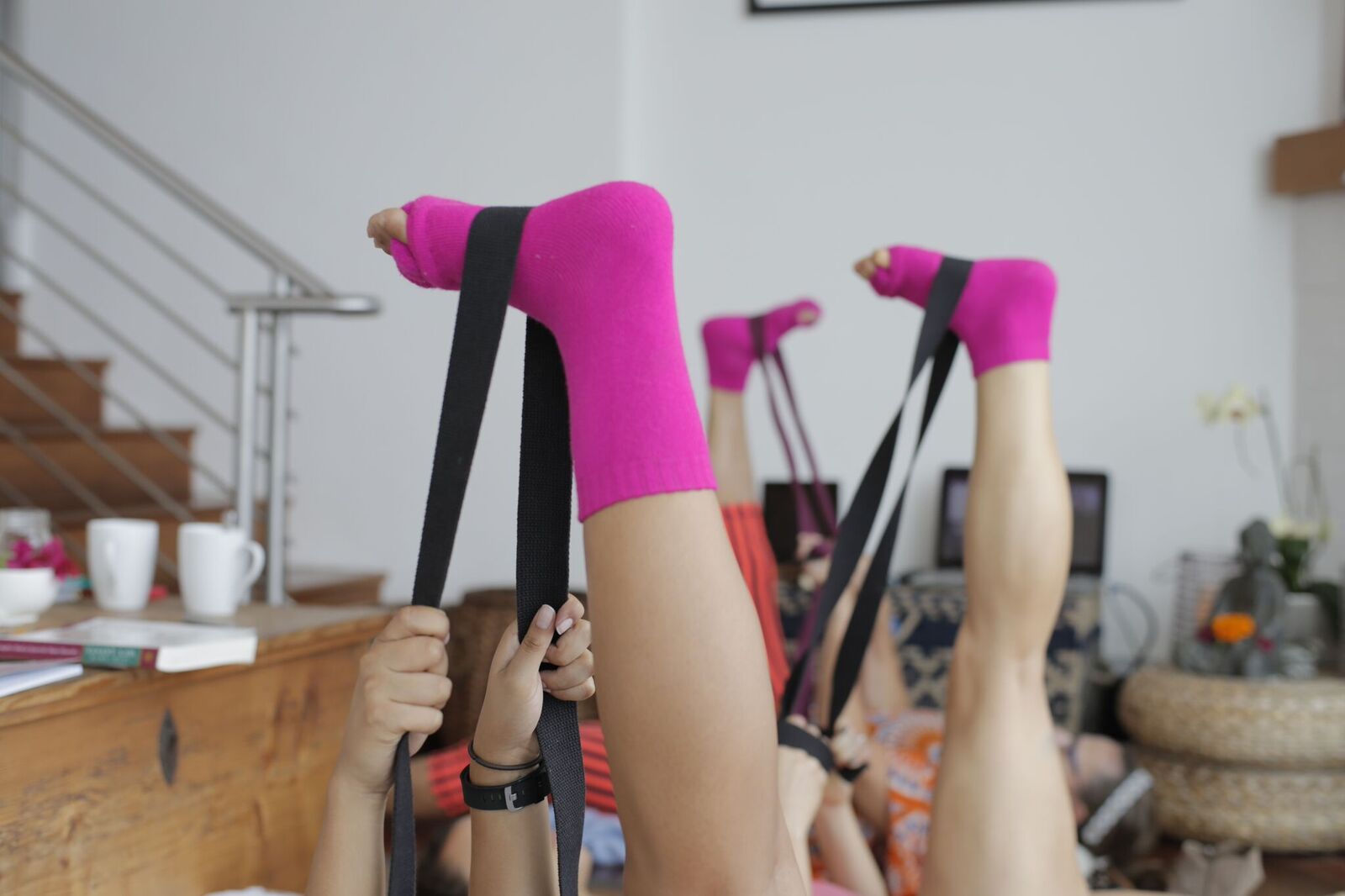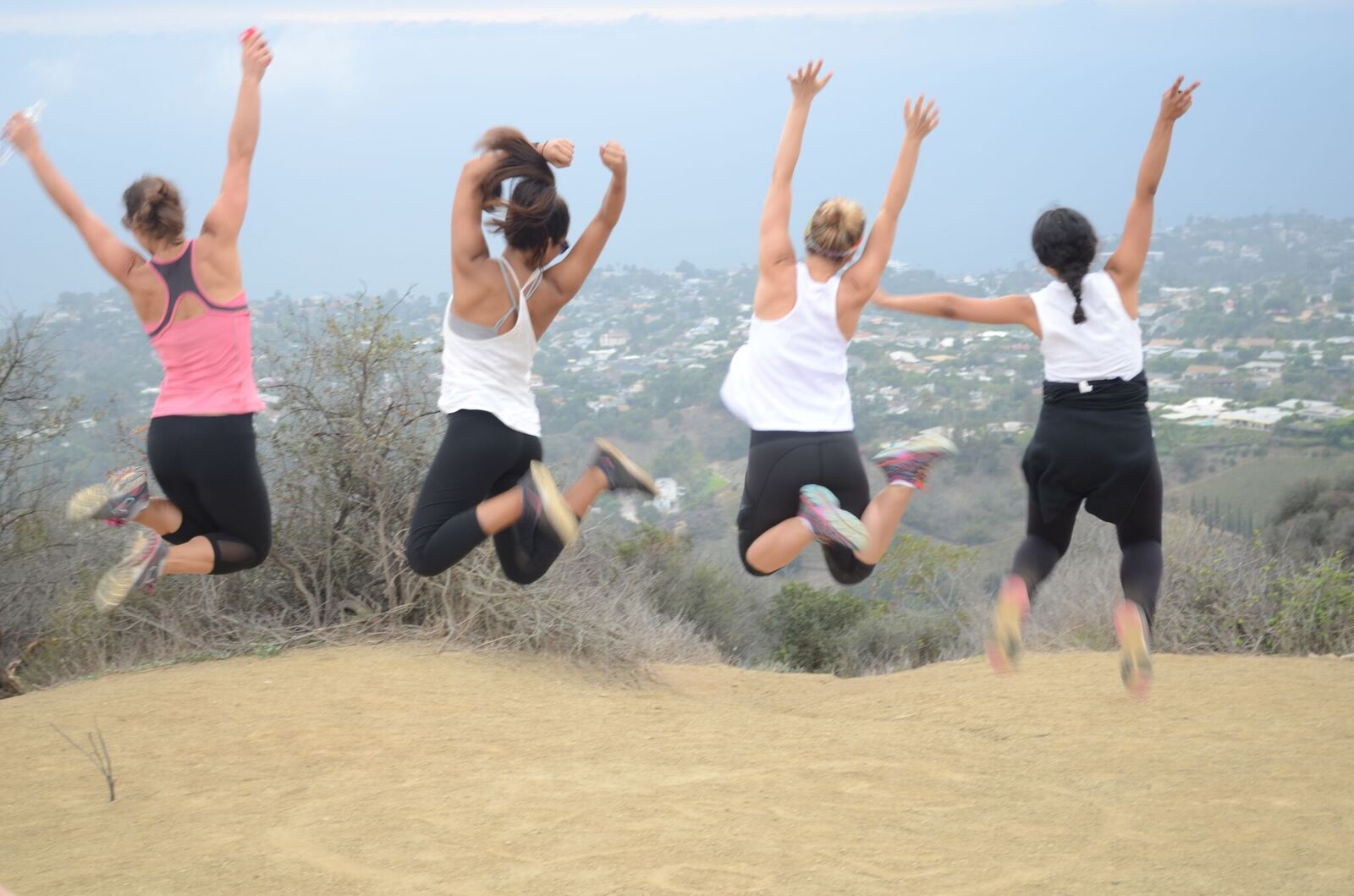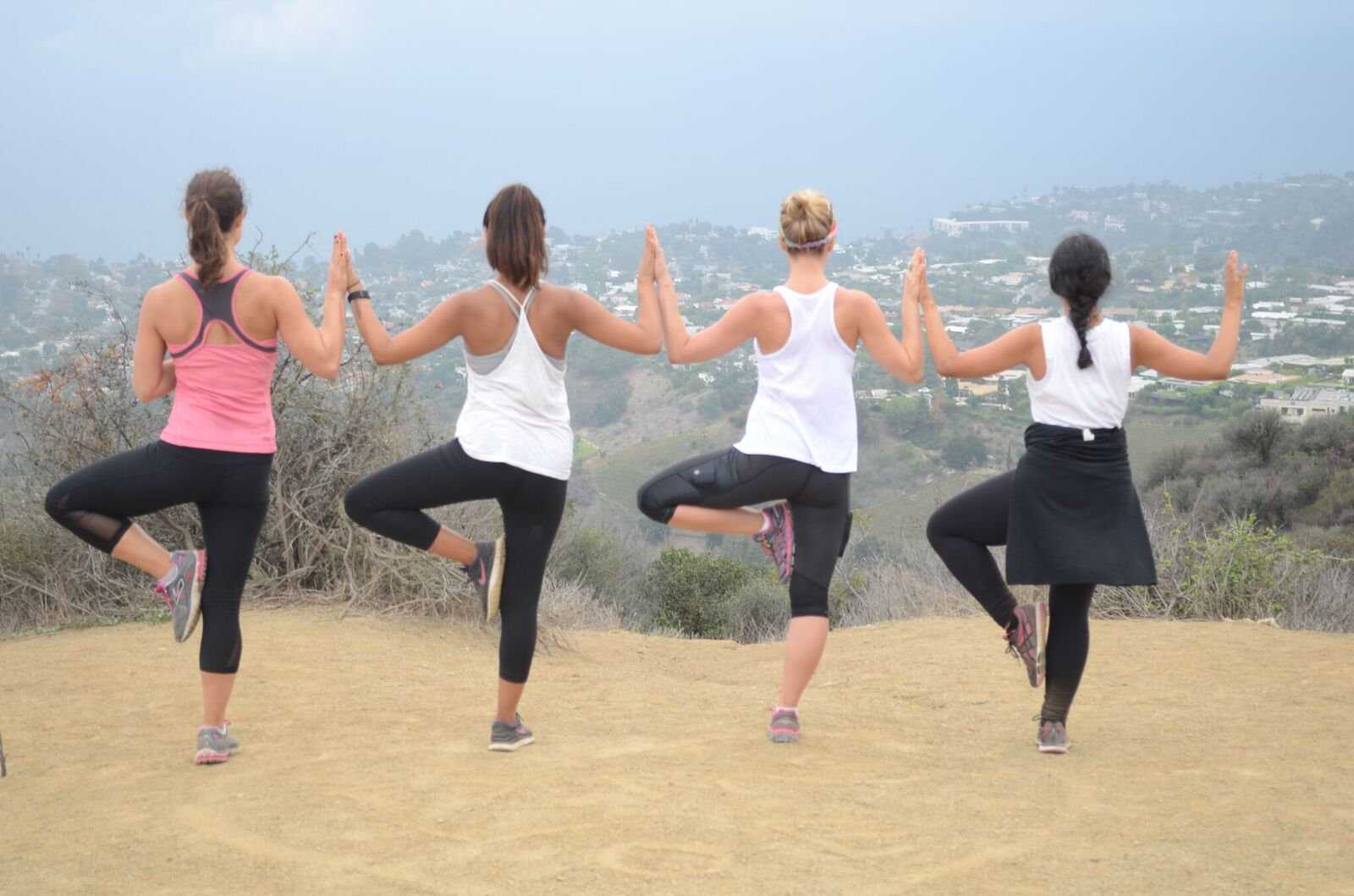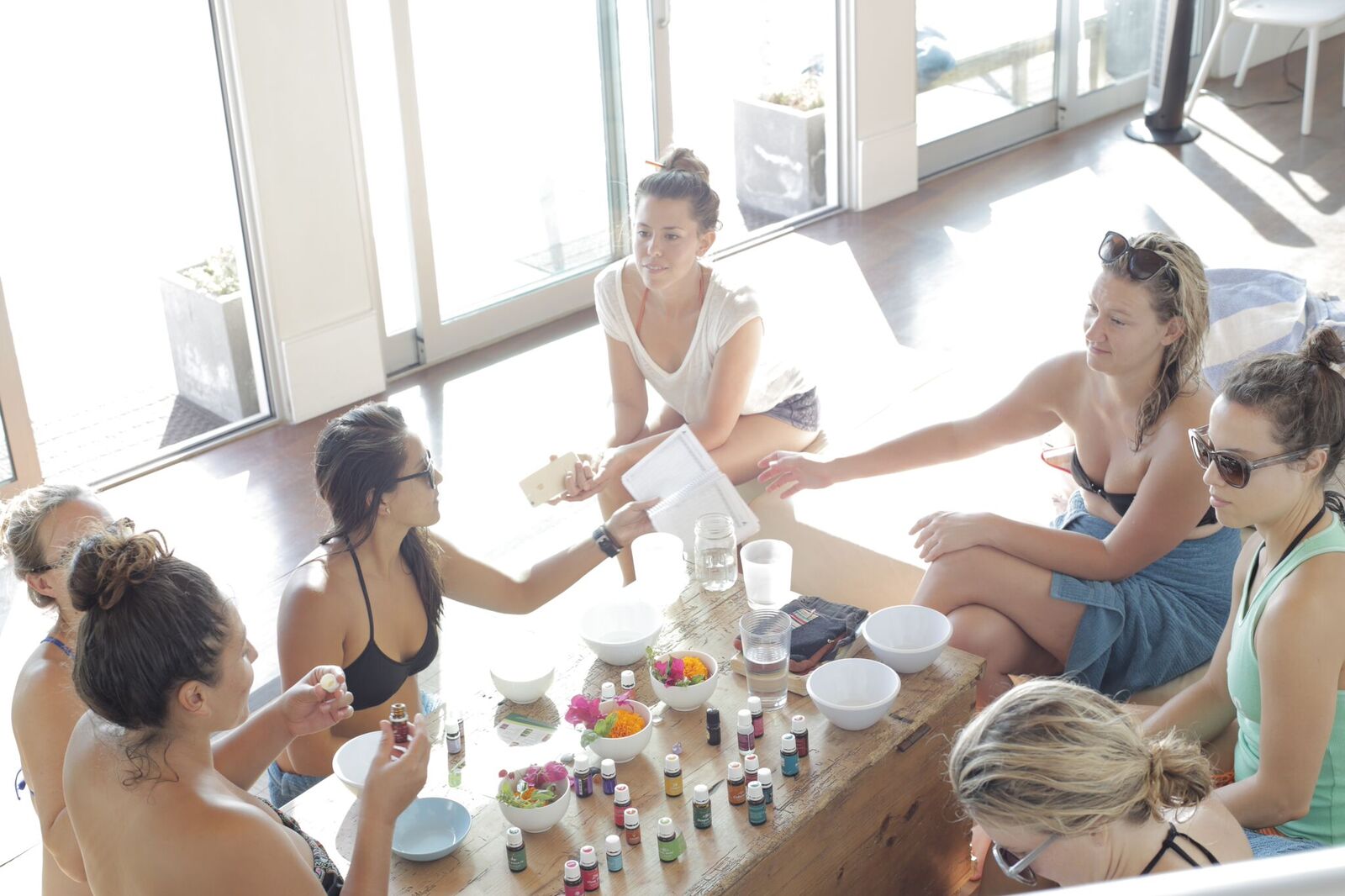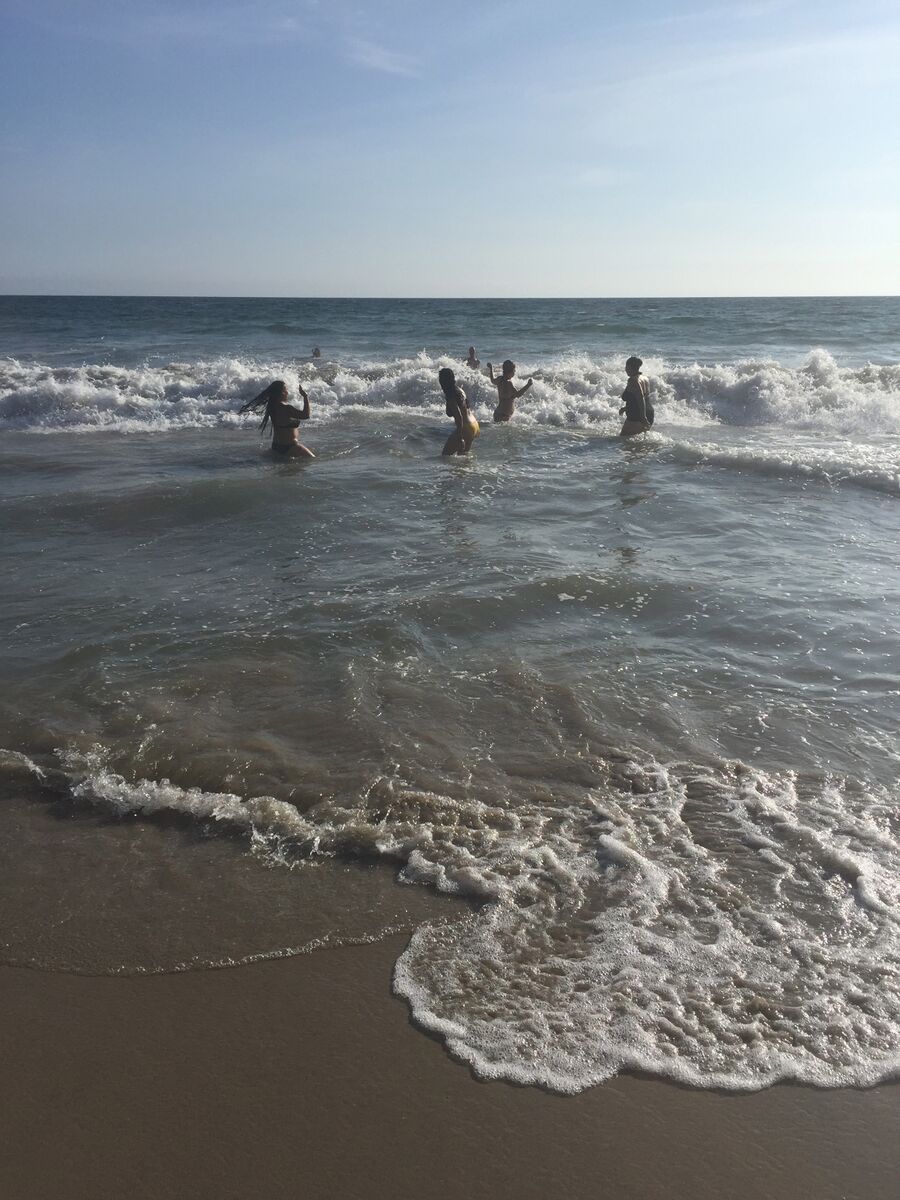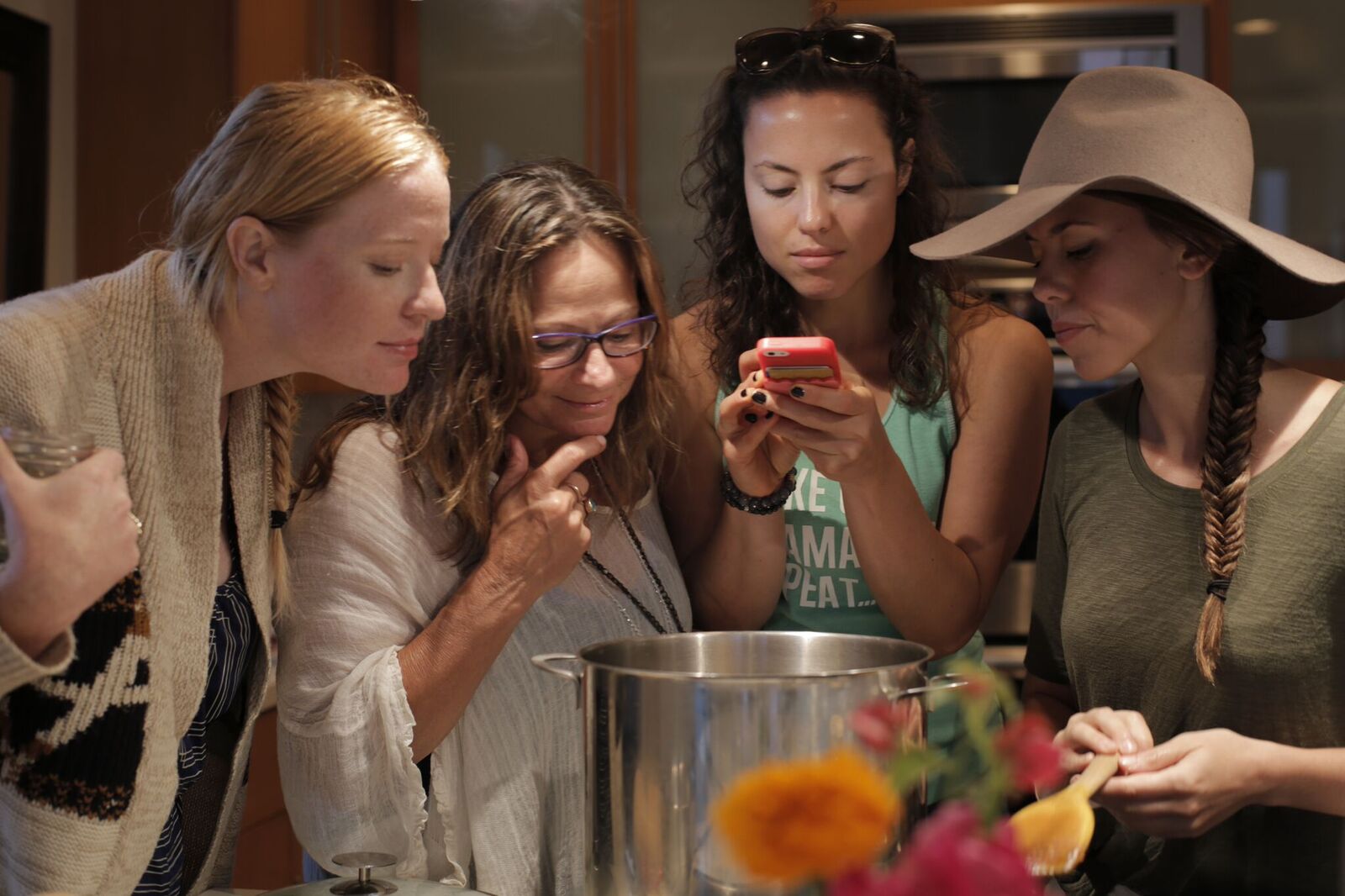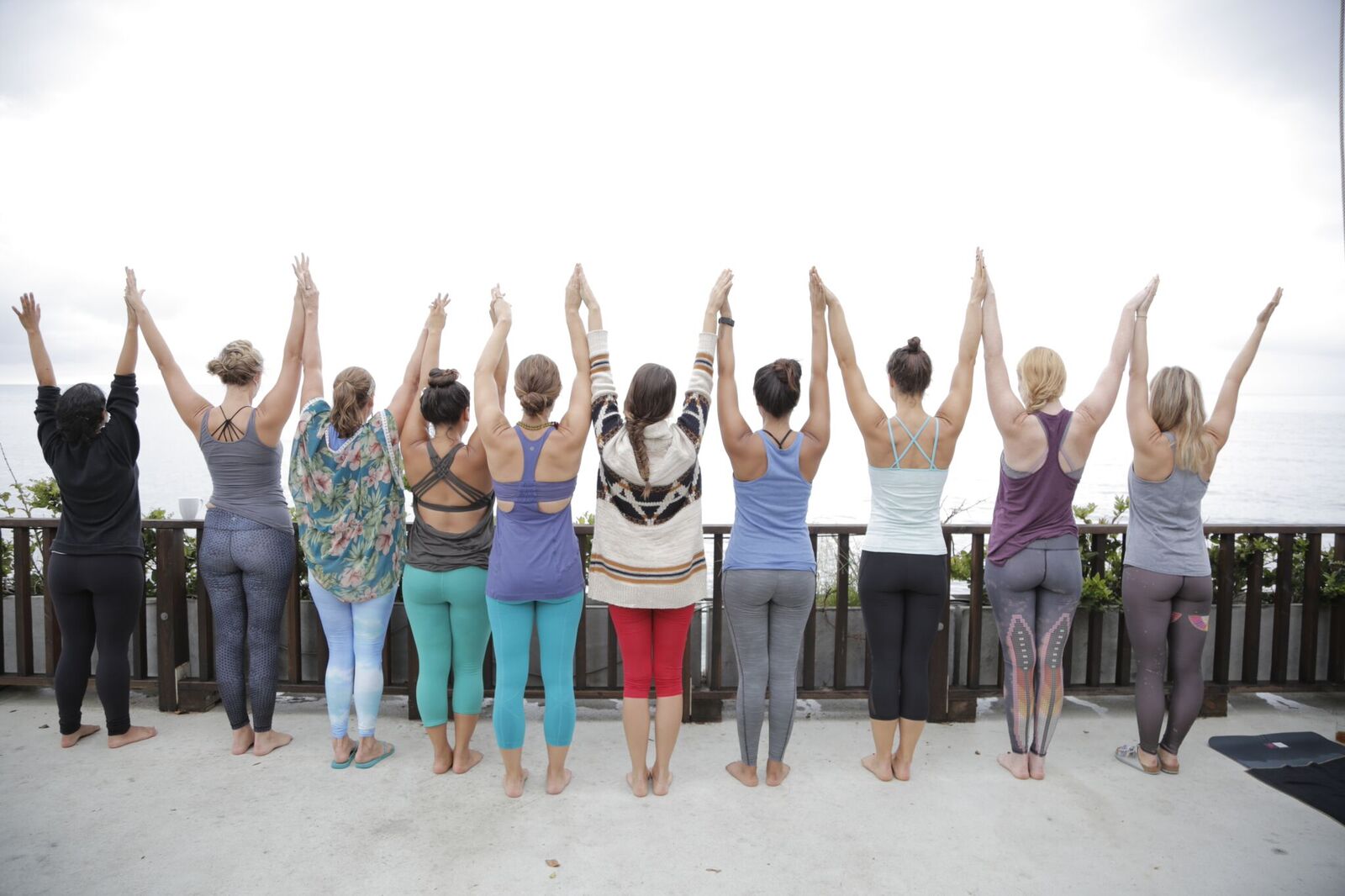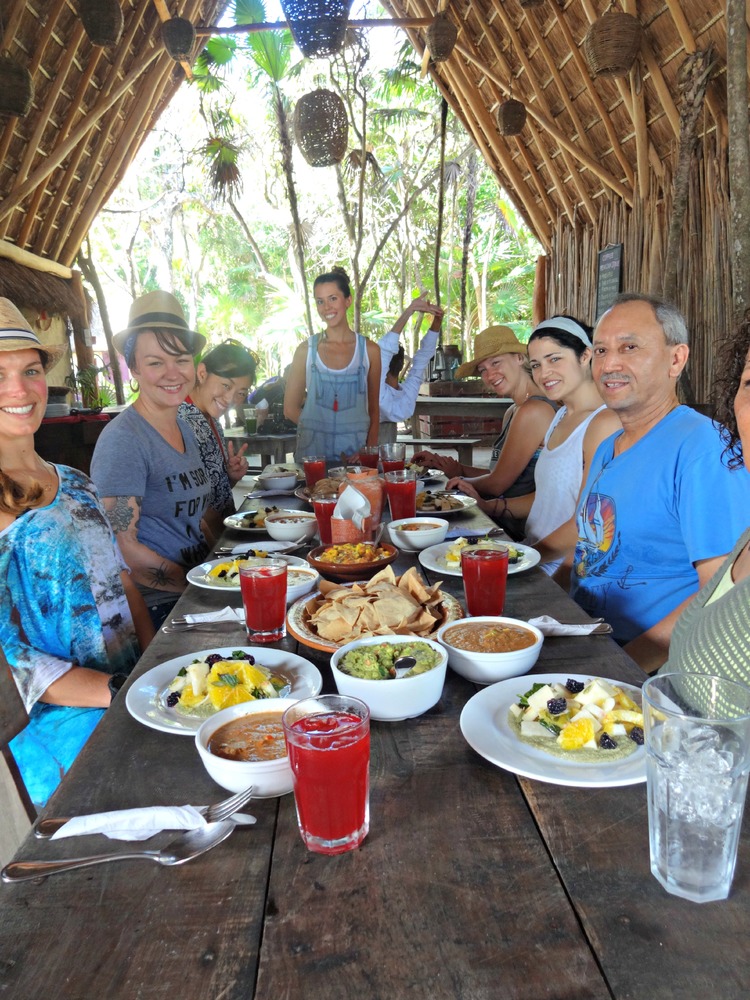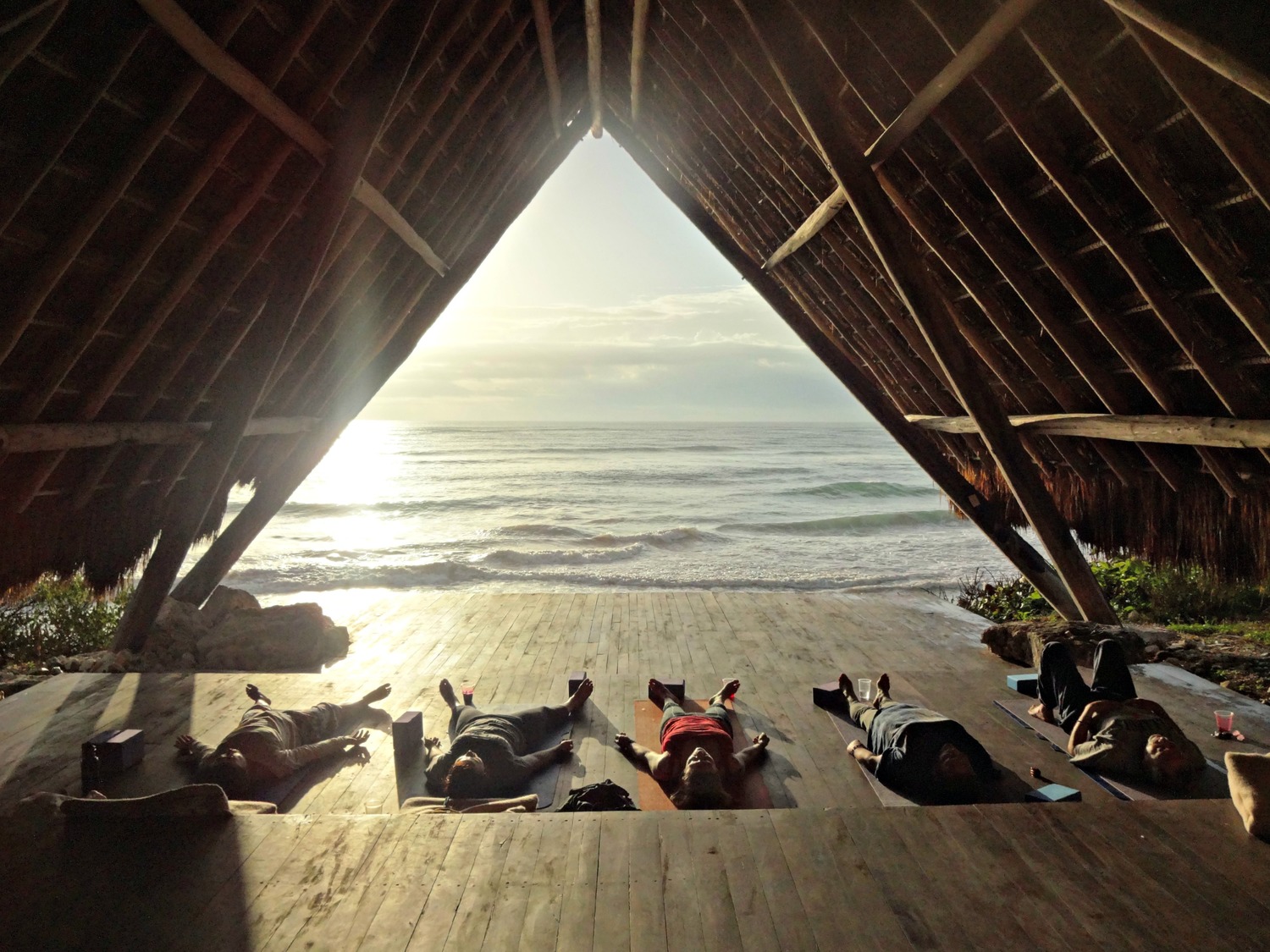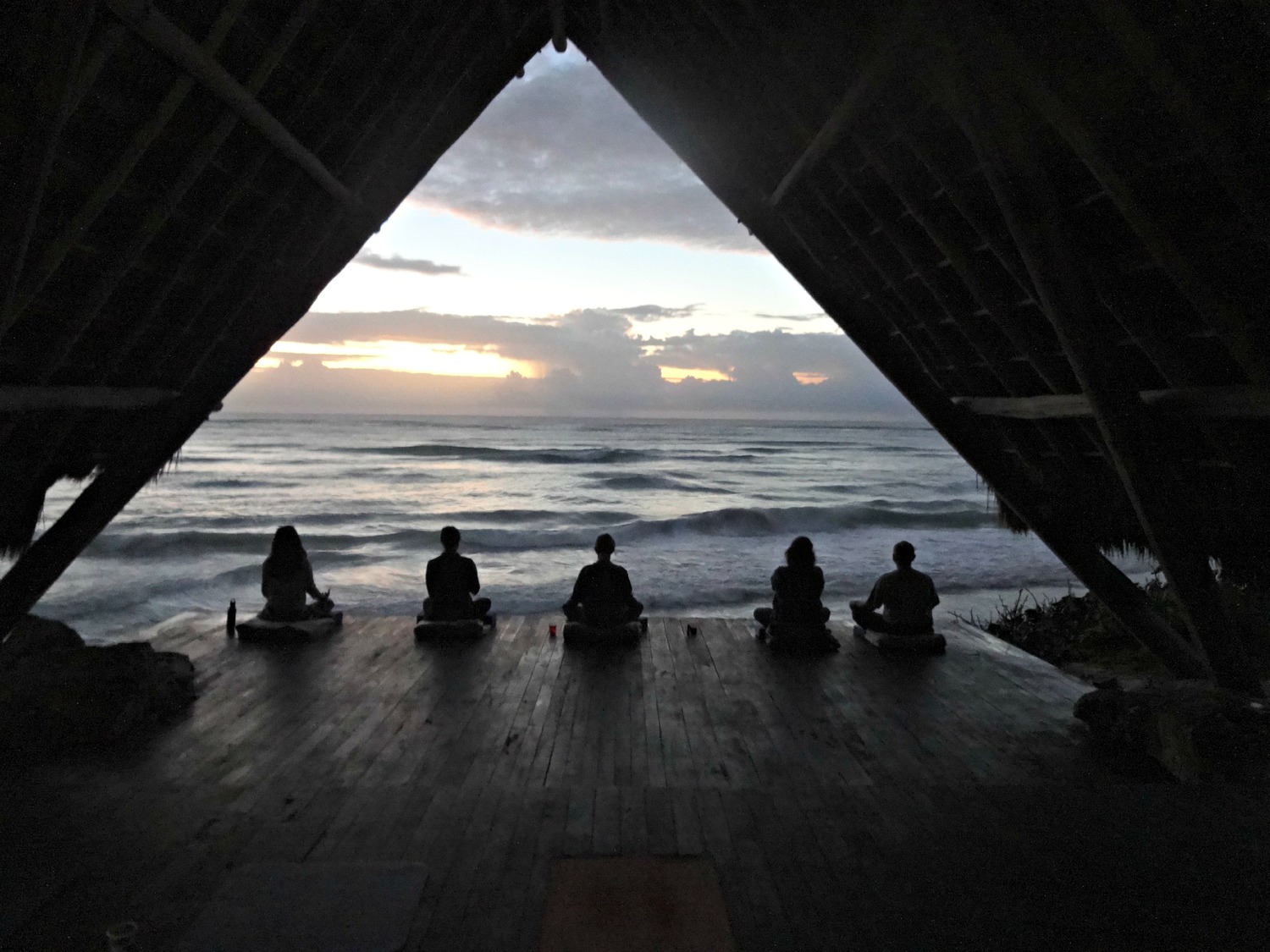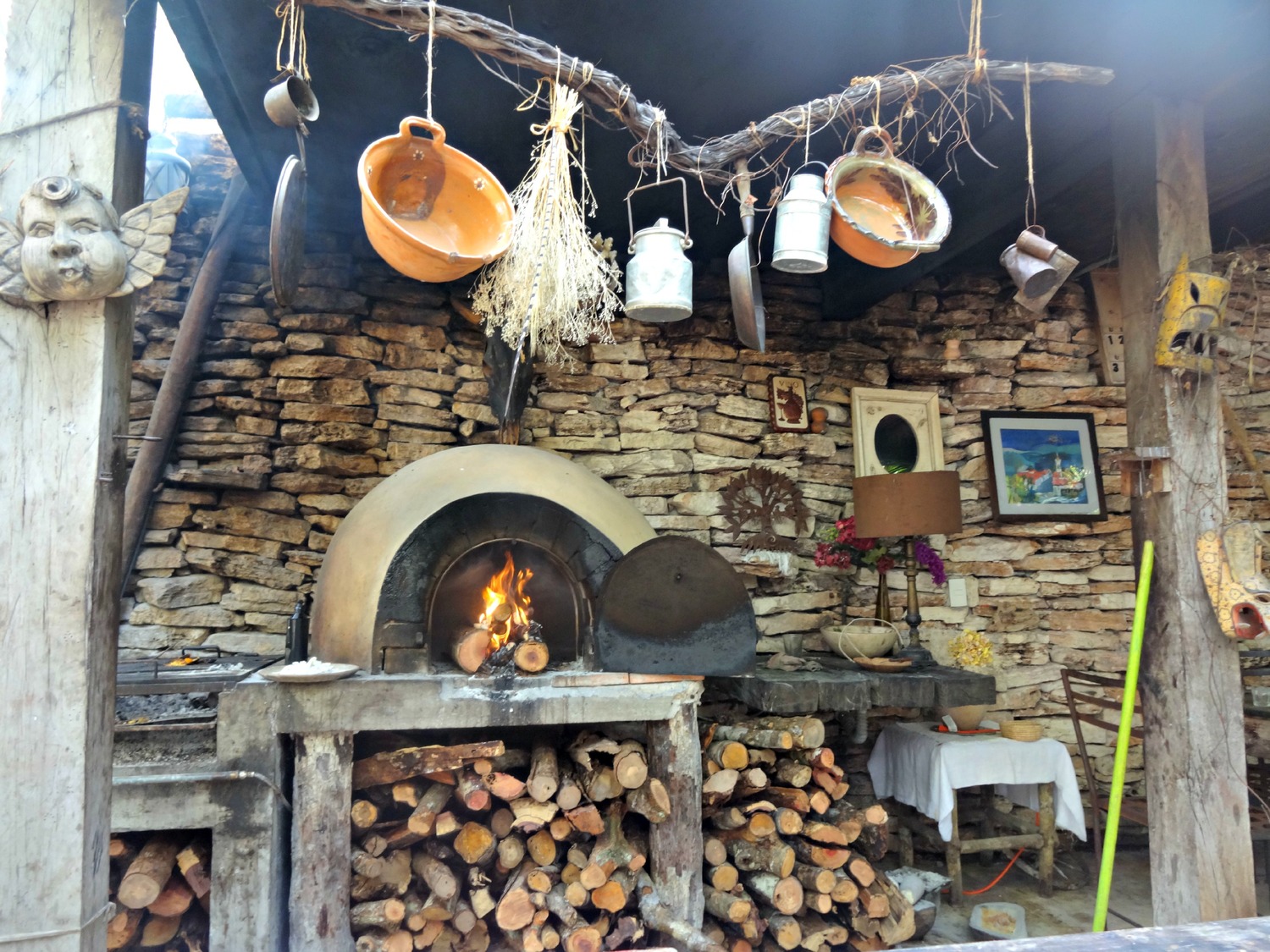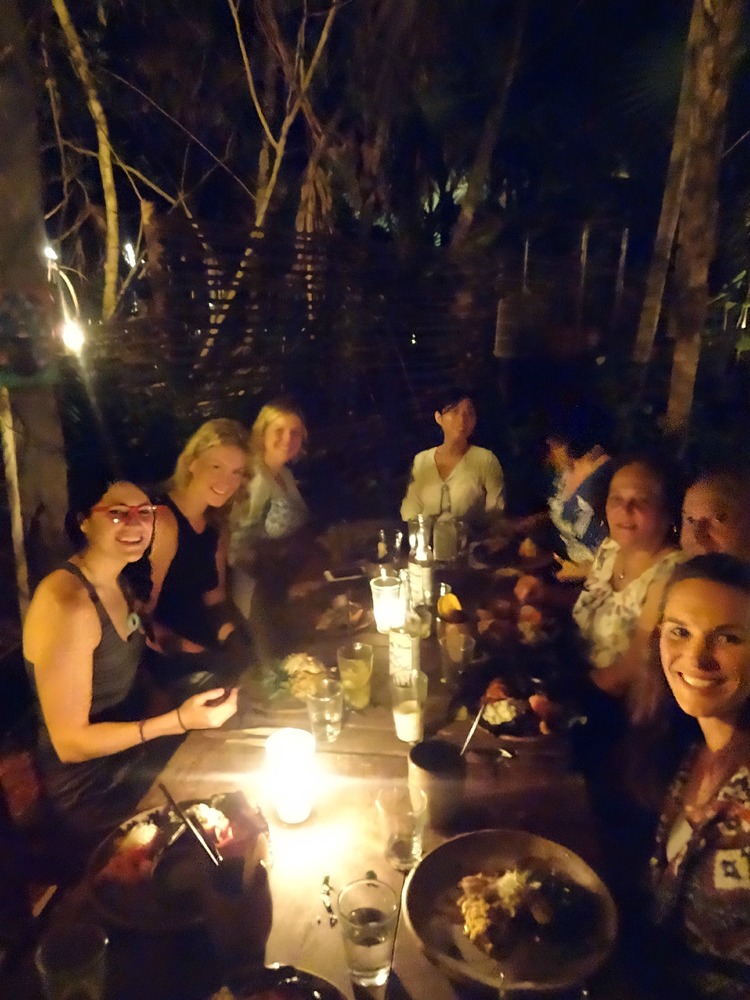What if I AM after the physical practice and am intimidated by the meditation aspect? At our retreats, what we think is awesome about getting started with a physical yoga practice is that it gives us the opportunity to experience all the wonderful benefits of movement AND affords us the space to build awareness around our alignment. When you show up to your mat and practice repetitively with informed alignment, your cells get smarter (Seriously! Cells adjust their structure and function based on how you move or don't move <-- Amanda, Doctor of Physical Therapy + Yoga Instructor, will get into it more at the retreat). If you are after improving your physical body through yoga, then our Malibu offering is a great place to start. We dedicate the time to teaching key alignment points that most basic classes just don't have the time to get into. We give you the building blocks to look at your alignment from an objective perspective and help you find solutions that eliminate pain, optimize function, and take ANY established yoga practice to a new level.
This conversation usually leads to.... "Then, what style of yoga is best or what style should I start with?" The yoga style you get into is very much a personal choice. We like that there are lots of styles to choose from. If you get into Ayurveda (wait,What is Ayurveda?), the style that brings you most balance or what you become attracted to is often dependent on your dosha (mind-body preferences). To help make that decision easier, we have compiled a list of 10 of the most popular styles and how they differ from our prespective. We start with the 2 styles taught at our retreat, and take it in alphabetical order from there. The best way to figure out which is best for you is to try them all out!
YOGA STYLES 101
Vinyasa / Power
This active and athletic style of yoga was adapted from the traditional ashtanga system in the late 1980s and appealed to many stimulation needy Americans. This style was created by Beryl Bender Birch and Bryan Kest who had both studied under Phatabi Jois. The words "Vinyasa", "Flow" and "Power" are typically used interchangeably to indicate a class that is more of a yoga dance. Vinyasa (pronounced "vin-yah-sah") is actually the Sanskrit word for "flow". Teachers of this style choreograph their classes with series of poses that transition into one another. Breath (pranayama) is used to signal movement (inhale to stand, exhale to fold) and also to build heat in the body. Classes are typically challenging because you are always moving from one pose to another which requires a combination of strength, balance & flexibility. Because the classes are designed by the instructor, you always get something different. If you've taken enough of these, you'll start to notice that there's a basic skeleton to many of these classes: an integration series, sun A + sun B that lead to a peak pose and a cool down portion that leads to the final relaxation pose (savasana). Vinyasa classes are great for people, who from a physical standpoint, want more movement and flow. In Ayurveda, the morning is a great time to nourish your body with movement. After a little morning meditation, a dynamic, heat building vinyasa sequence is typically how we start our mornings at our retreats.
Yin/Restorative
A quiet, meditative yoga practice, also called taoist yoga. Restorative yoga focuses on restoring mobility and flexibility to the body by using gravity, props and time to do the work. Postures are usually done seated or lying down on your mat with an assortment of bolsters, straps, blocks, and blankets helping to support your body. Each pose is held between 3-10 minutes (or sometimes more) during which the use of pranayama and meditation allows the mind, body, and nervous system to shift into a more relaxed state. Staying in tune with daily rhythms, at our retreats, we do a cooling, restorative, candle lit class in the evenings as a way to mentally digest our day, wind down for sleep and thank our bodies for all the work that it did that day. It is very deliberate, gentle, quiet and slow-paced.
Anusara
Developed by American yogi John Friend in 1997, Anusara yoga is a relative newcomer to the yoga world. Based on the belief that we are all filled with an intrinsic goodness, Anusara seeks to use the physical practice of yoga to help students open their hearts, experience grace, and let their inner goodness shine through. The poses in Anusara yoga are considered to be “heart-oriented,” meaning that they are expressed from the “inside out.” Instead of trying to control the body and mind from the outside, the poses originate from a deep creative and devotional feeling inside, from the essence of Divine goodness within. What teachers of Anusara yoga may do is provide guidelines in the form of Principles of Alignment and other useful tools for students to progress and develop their own methodology. As part of the positive focus of Anusara yoga, teachers and instructors will generally not "fix" student poses, but instead, allow each individual to develop on their own. Since 2012, several allegations have been brought against Friend, many of the allegations center around Friend have improper relations with employees and students. Still, there are teachers that remain and are devoted to uplifting the Anusara community. "When Friend debuted Anusara in 1997, it was a hybrid of alignment, therapeutics, and Tantric philosophy, but toward the end he stopped incorporating other teachings and evolving the practice" and now those that want to rebuild are "actively trying to create a different, less rigid, more diversified way of teaching and doing business." Follow you gut.
Ashtanga
Ashtanga is based on teachings in the ancient manuscript, Yoga Korunta, that were passed down to the founder of "Ashtanga" Pattabhi Jois (pronounced "pah-tah-bee joyce"). He was responsible for popularizing the sequences in 1948 and bringing them to the West. Like Bikram, it follows a set sequence of asanas (poses), but Ashtanga sequences link breath to movement in a Vinyasa style (see below). Ashtanga literally means "eight-limbed yoga" and is styled after the eight limbs of yoga as outlined in the Yoga Sutras (historical text by Pantajali on yoga philosophy). There are six established sequences that focus on building internal heat through your breath and movement. Ashtanga has a very dedicated following and many yogis travel every year to the Ashtanga Yoga Research Center in Mysore, India to learn the teachings. In Mysore-style classes you practice one of the sequences in a room with others on your own without being led by an instructor. Some of them will require you to perfect an asana first before moving on to the next one in the sequence. Pattabhi Jois passed away in 2009 but his family still teaches in Mysore and around the world. This style of yoga is of medium to high intensity and focuses on progression and growth in the sequences, the room isn't heated but you'll definitely get a workout.
Bikram
Bikram is a style of yoga that follows a very specific and set sequence of 26 postures developed and created by Bikram Choudhury about 30 years ago. Its origins are from Hatha yoga, but the heat and sequence make it "Bikram". The sequence is practiced in a room heated to about 105 degrees and 40% humidity. Each posture is practiced twice and was specifically chosen and sequenced to focus on different parts of the body in a very systematic approach. It's very deliberate, very intentional.... and many would say very intense. You might call it the Type A in yoga style personalities. A Bikram studio must be certified and licensed and must teach the sequence EXACTLY as it is written. For this reason the sequence is consistent and appeals to those that like to keep coming back to familiar poses and see improvements in flexibility and strength. In recent years, Bikram started taking many studios and teachers to court for offering classes with a similar sequence because the name and sequence known as "Bikram" is licensed and trademarked. However, these cases began to mysteriously disappear when allegations began arising against Choudhury and some indecent actions with students and teachers. Understandably so, in efforts to rebuild their community, "More and more Bikram Yoga studio owners have quietly migrated away from Bikram affiliations and are instead offering the same or a similar sequence under a different name."
Hatha
One of the original six branches of yoga. Hatha yoga basically means the physical practice of sequencing asanas together... which is almost every class you will take if you walk into a Yoga studio in the US. Hatha can be translated as ha (sun) and tha (moon) and focuses on balancing the masculine and feminine qualities of our bodies. The physical asanas are created to cleanse, align and tone the nervous, circulatory, and reproductive systems to allow the body to function in its most optimal state. All other styles of yoga listed above or below incorporate some amount of Hatha Yoga. If you see a class advertised as "Hatha" at a studio, they are typically beginner level, gentle classes that focus on teaching a basic set of asanas. A great place to start.
Hot
Pretty much the name describes it. Many times other styles of yoga are integrated into a hot setting (rooms heated between 94 and 104 degrees) and they put the word "hot" in front of it... think Hot Vinyasa or Hot Power. Corepower Yoga is a chain of studios across the U.S that has popularized Hot Power and Vinyasa classes. Adding a heated environment to your yoga practice can increase blood flow to your muscles allowing for a deeper stretch, increase your metabolic rate, aid in cleansing through increased sweat production, and help the mind to focus. It can also make you feel like you are going to pass out :-). Avoid going into class dehydrated by drinking water (with a sprinkle of sea salt for electrolytes) up to an hour beforehand and make sure to take everything at your own pace. Don't jump into a Level 2 class and do handstands if you haven't gone to a hot class before. Bring extra towels and for those with strong pitta doshas, be careful of these classes in the dead heat of summer.
Iyengar
Iyengar yoga was developed by B.K.S. Iyengar (pronounced "eye-yen-gar") as he was looking for healing methods from tuberculosis. It's a form of hatha yoga that focuses on proper alignment. Props like blocks, straps, harnesses, and incline boards are used to support your body in many poses... helpful if you'd be risking injury trying to perform the poses on their own. There is very little flow in these classes, you hold poses for period of time while you work on perfecting your alignment. These classes definitely challenge your strength and commitment to staying still. Iyengar is great for people with injuries or looking to prevent injuries as the teachers are trained to teach proper alignment.
Jivamukti
A physical, limit-pushing practice that reintegrates yoga’s traditional spiritual elements in an educational way for Western practitioners. Expect a theme for each class, Sanskrit chanting, and references to ancient scripture. Created by Sharon Gannon and David Life in 1984 in New York City, Jivamukti translates as “liberation while living.” Jivamukti centers itself around 5 tenets: ahimsa (non-violence), bhakti (acknowledgment that God/Self-realization is the goal of all yoga practices; can be expressed through chanting, the setting of a high intention for the practice or other ), dhyana (meditation), nada (the development of a sound body and mind through deep listening), shastra (study of the ancient yogic teachings). A Jivamukti class is physically challenging and includes a focus or intention, supported by chanting, breath awareness, flowing vinyasa sequences, alignment exploration, hands-on assistance, relaxation and meditation. All classes include 14 points—asanas, meditation and spiritual teachings—in a sequence creatively designed by the teacher. These classes offer a great place to start for someone looking for an energetic and challenging class.
Kundalini
Kundalini is a style with deep historic roots, it was originally practiced in secret in India and only taught from master to a select disciple for centuries. Yogi Bhajan first brought Kundalini to the Western masses in the 1960's in efforts of giving humanity a better way to experience God ("better" meaning other than drug-use and substance abuse that we very prevalent in California in the 60's). It is called the "Yoga of Awareness" and harnesses the power of breath, mudras, meditation, and body locks to help you find inner awareness and experience your soul. Poses are typically held for an extended period of time and the use of chanting, pranayama and meditation is encouraged. During a Kundalini class energy should be moving up your spine so some people and instructors will wear turbines to prevent the energy from escaping through the crown of their heads. The color white is also frequently worn to expand your aura and to lift your energy and mood. Many dive into it from a lifestyle perspective and others may find it appealing as a way to start learning more about the subtle energies (chakras) that are often discussed in yoga classes. Kundalini is also known for having a strong community of followers.












































